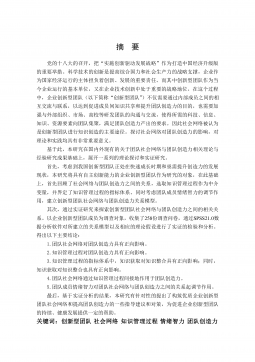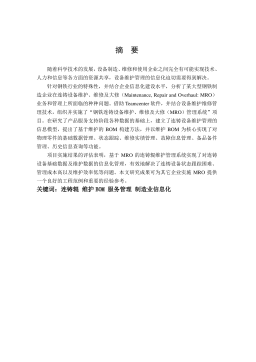长三角税收收入与经济增长的关系研究
摘要自从经济学产生以来,世界各地无数经济学家投入了大量的时间和精力去探索经济增长的要素、经济增长的原因、经济增长的内在机制以及经济增长的途径等等。而税收收入作为经济增长的重要影响因素和主要结果,它的增长一直受到经济学界的关注,因此,税收收入与经济增长的关系问题一直是经济学界研究的问题和对象。长三角以全国2.2%的陆地面积、10.4%的人口,创造了全国20.31%的国内生产总值、23.83%的税收收入,其经济的快速发展,可以带动我国其他省市经济的发展,吸引海外投资,推动我国产业与技术转移,有利于参与国际竞争与区域重组。本文选取1995-2008年长三角的税收收入和经济增长的数据,在第三章中从总量...
相关推荐
-
USST_Arts_112480743自动生产线的同步维修模型及案例分析VIP免费

 2025-01-09 14
2025-01-09 14 -
USST_Arts_112480745基于供需网特征理念的企业间关系状态研究VIP免费

 2025-01-09 15
2025-01-09 15 -
USST_Arts_112480756 我国城镇化与能源消费结构间关系的研VIP免费

 2025-01-09 20
2025-01-09 20 -
USST_Arts_112490763 企业创新型团队社会网络、知识管理过程及团队创造力关系研究VIP免费

 2025-01-09 13
2025-01-09 13 -
USST_Arts_112490769创新团队执行力影响因素分析VIP免费

 2025-01-09 16
2025-01-09 16 -
USST_Arts_112070649基于团队自反性的科技型企业TMT特征对企业绩效的影响研究VIP免费

 2025-01-09 19
2025-01-09 19 -
TR公司工业机器人市场发展战略研究VIP免费

 2025-01-09 24
2025-01-09 24 -
二氧化碳套管式气冷器的研究VIP免费

 2025-01-09 17
2025-01-09 17 -
非共沸混合物在微通道水平单管内流动沸腾特性VIP免费

 2025-01-09 75
2025-01-09 75 -
基于MRO的连铸辊维护管理系统研究VIP免费

 2025-01-09 11
2025-01-09 11
相关内容
-

USST_Arts_112070649基于团队自反性的科技型企业TMT特征对企业绩效的影响研究
分类:高等教育资料
时间:2025-01-09
标签:无
格式:PDF
价格:15 积分
-

TR公司工业机器人市场发展战略研究
分类:高等教育资料
时间:2025-01-09
标签:无
格式:PDF
价格:15 积分
-

二氧化碳套管式气冷器的研究
分类:高等教育资料
时间:2025-01-09
标签:无
格式:PDF
价格:15 积分
-

非共沸混合物在微通道水平单管内流动沸腾特性
分类:高等教育资料
时间:2025-01-09
标签:无
格式:PDF
价格:15 积分
-

基于MRO的连铸辊维护管理系统研究
分类:高等教育资料
时间:2025-01-09
标签:无
格式:PDF
价格:15 积分






